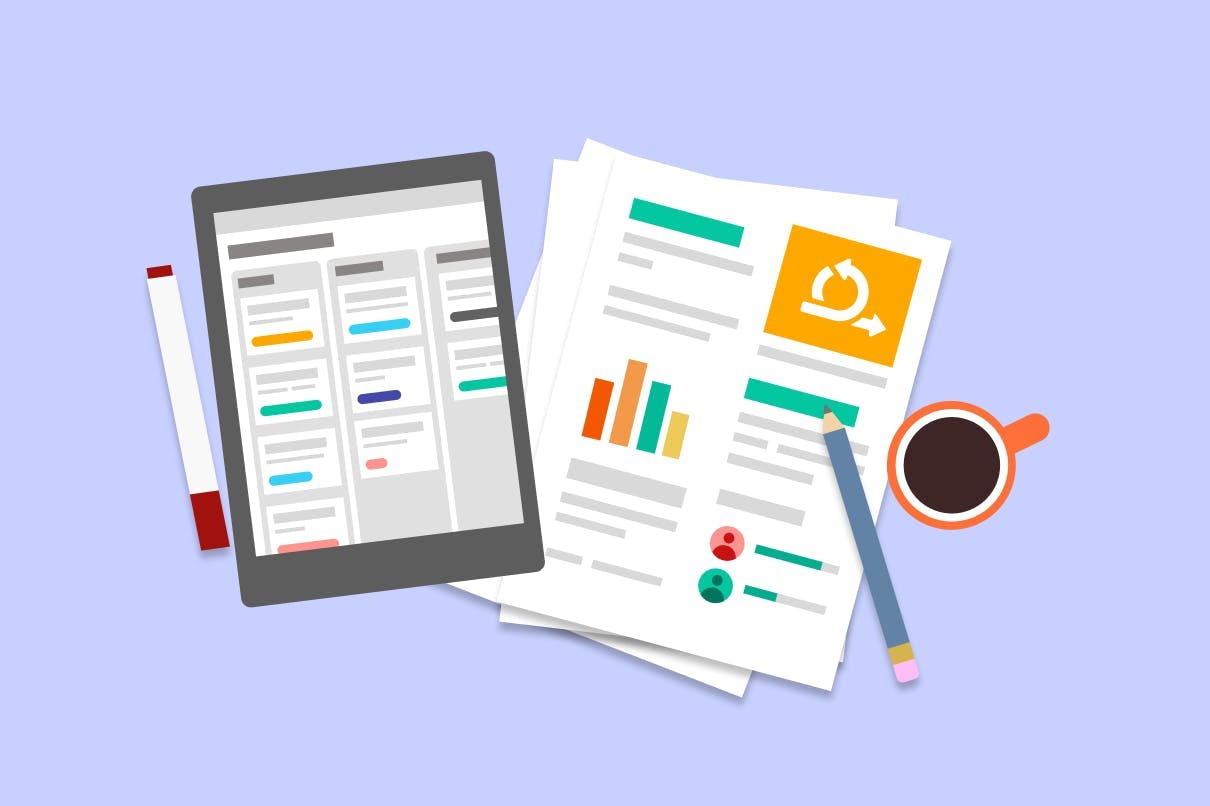Top Methodologies for Software Development Agencies

Throughout the decades, there have been a variety of software development methodologies and frameworks introduced to help software developers and agencies create higher-quality projects. They are here to provide guidance when building software and apps and since the early days of programming, methodologies have been pivotal for software development teams in the UK and around the world.
Knowing which methodology is best suited to a project depends largely on factors such as the size and structure of the team involved, expertise, project goals and requirements, budget and timeframe.
In this Rocketmakers blog, we have put together an overview of some of the most widely recognised and utilised software development methodologies of today.
Agile Software Development
Agile methodology is probably one of the most popular software development methodologies in recent times and is what we at Rocketmakers work to when delivering projects to our range of fantastic clients. Agile methodologies put a strong emphasis on iteration, experimentation, collaboration and efficiency.
Agile software development methodologies all have the same aim of embracing change at all stages of a project. To help achieve this, projects are typically broken down into smaller chunks. The iterative approach of Agile methodologies includes regular meetings between all those involved such as the project manager, software developers, users and stakeholders. Communication and transparency take centre stage, with continuous feedback welcomed throughout the process and changing requirements dealt with efficiently, with no huge risks to the project timeline.
The benefits of Agile software development can include higher stakeholder engagement and satisfaction, increased adaptability to changing requirements (should that be prioritisation of tasks, the introduction of newer technology, etc) and improved overall product quality.
Today, Agile methodology is rapidly growing in popularity among all types of companies. According to a Deloitte report, 80 percent of large IT projects are now using “Agile” or “iterative” approaches. There are various frameworks used in software development that follow the Agile methodology. Let’s dig a little deeper.
Kanban
Kanban is an Agile workflow management method that, in a nutshell, helps teams to optimise service delivery processes and improve continuously. The term ‘Kanban’ is Japanese for “visual signal”, with the methodology emphasising the visualisation of workflows via Kanban boards.
While not strictly a software development methodology, Kanban has been adopted by many development teams in the UK and beyond who look to visualise workflows and achieve predictability in project delivery. The visual nature of the methodology helps all those involved to have a model of the current and future states and all the individual tasks (via the Kanban cards) required to reach product delivery. By visualising the flow of work, team members are able to more effectively eliminate any risks or bottlenecks. Kanban boards can either be physical boards (typically using sticky notes and a whiteboard), or a digital solution — which have proven to be much more flexible, collaborative, and convenient (especially in today’s remote working era!)
Besides visualisation, some of the main practices of Kanban include limiting work-in-progress, managing flow, and implementing feedback loops. The main aim of Kanban in software development projects is to optimise value streams, improve the flow of feedback and build more predictable service delivery processes.
Lean Development
This next methodology was actually derived from the lean manufacturing principles of Toyota. In a nutshell, Lean focuses on following guiding principles that empower software developers to minimise wastage and increase output. Instead of spending time on non-productive activities such as unnecessary documentation and redundant codes, this methodology promotes efficiency and improves time-to-market.
Some of the main principles of Lean Development in software development include:
- Gaining a deep understanding of what the customer wants. These are made a priority and anything that doesn’t add value to the customer is removed.
- Eliminate waste. As above, anything that doesn’t add value should be removed including unnecessary code or functionality and overload.
- Amplify learning. The software development teams are encouraged to accumulate and share knowledge i.e through end of iteration reviews.
- Deliver as quickly as possible. The faster you present functions to the customer, the faster you will get feedback and the quicker you can deliver the product with all the necessary improvements.
Extreme Programming (XP)
This is another methodology in software development that follows the Agile framework. Extreme Programming (XP), like most Agile methodologies, is a people-centric approach based on working in short development sprints that encourage consistent feedback, adaptation to change, and improvement throughout the process.
XP is really all about increasing efficiency in the development process and delivering maximum value to customers. However, it’s the key feature of XP that distinguishes this approach from the other Agile frameworks — and that’s its emphasis on technical aspects of software development. Developers are expected to go beyond their capabilities when performing the set of engineering practices outlined in XP. That’s where the “extreme” part comes into play.
The idea is that the valuable elements of traditional software engineering practices are put on ‘steroids’ per se — that is, pushed to extreme levels for maximum benefit. For instance, the practice of a code review takes it to the ‘extreme’ by ensuring that code is reviewed continuously throughout product development; there is continuous regression and testing; persistent refactoring; and so on.
All in all, projects that follow XP practices are known to involve rapid development, low defect rates, higher customer and employee satisfaction, and more.
Waterfall Development Methodology
Introduced in 1970, Waterfall was one of the most prominent methodologies for decades, with its plan-driven approach leveraged by software development teams in the UK and across the globe.
The name “waterfall” refers to the sequential, cascading and linear stage format of the methodology. At the start of a project, the stakeholder will typically gather all information regarding the scope and requirements, going on to create a project plan upfront.
This approach to gathering and laying out the requirements of the project sponsor at the very beginning enables all contributors to understand what must be done and when. Information concerning the requirements is typically contained in a single document and used to set out the project stages. As well as this, costs, assumptions, risks, success metrics, and timelines are also typically detailed. This approach allows all team members to effectively plan their time for the duration of the project.
Like Agile, Waterfall is a collaborative process. However, the tasks involved typically follow a more linear process. Of course, choosing the most suitable methodology for your software development projects will depend on the nature of each project. For those that require a more sequential approach, the Waterfall methodology may be a good option.
Here at Rocketmakers, our team of software experts work to the beat of an Agile drum. To find out more about our process, have a chat with one of our team members today.



